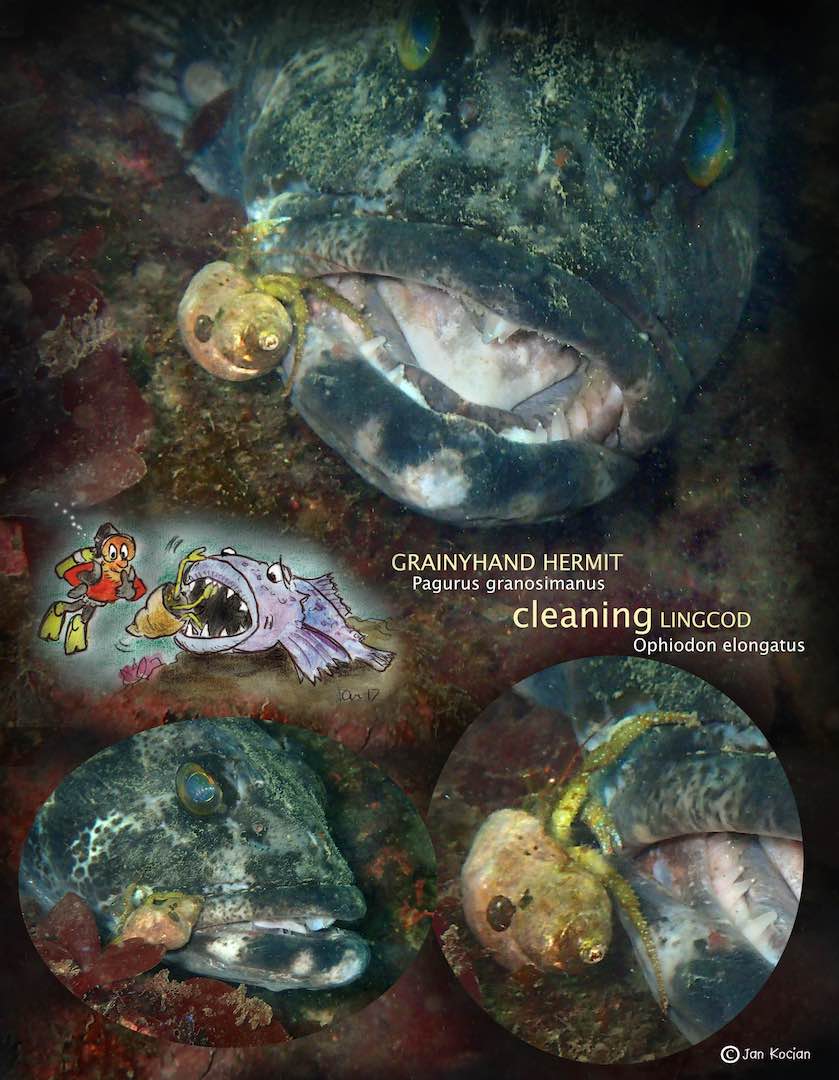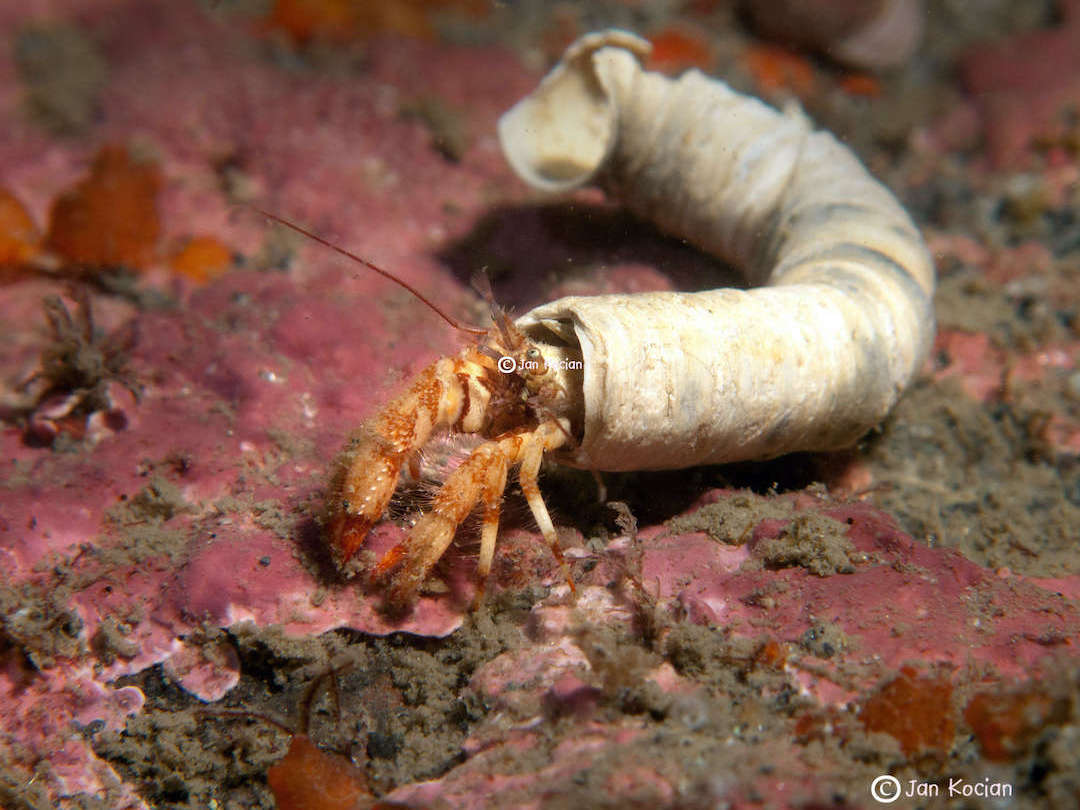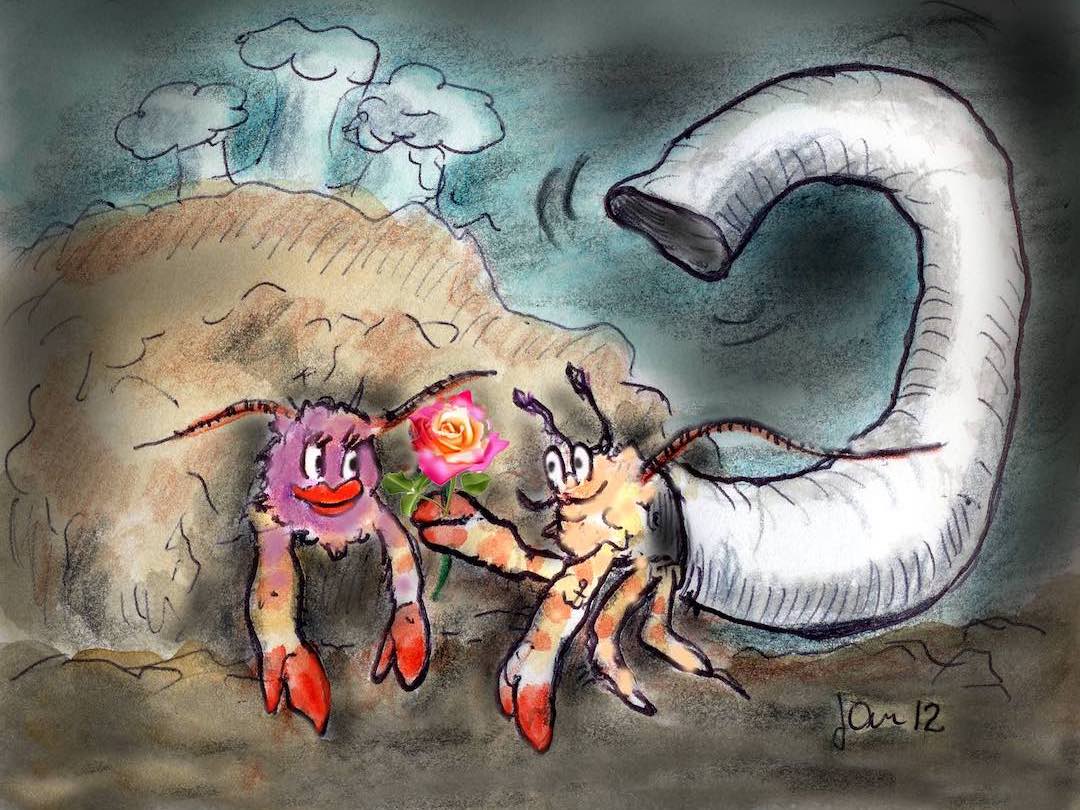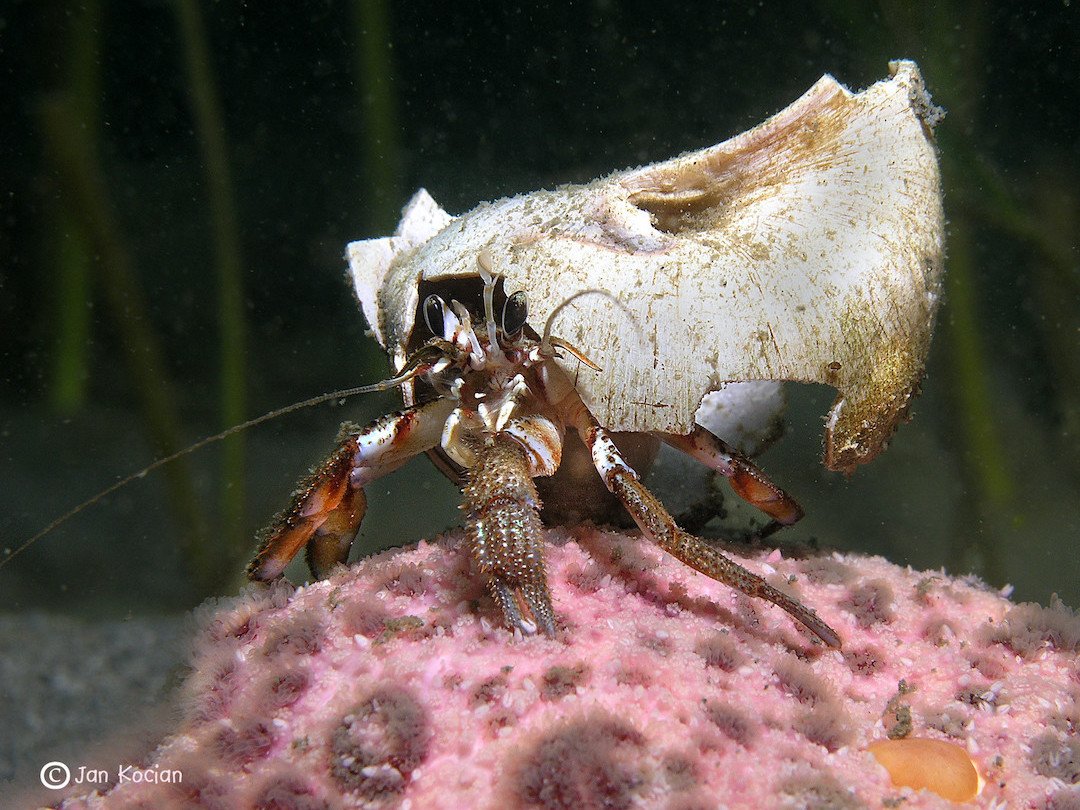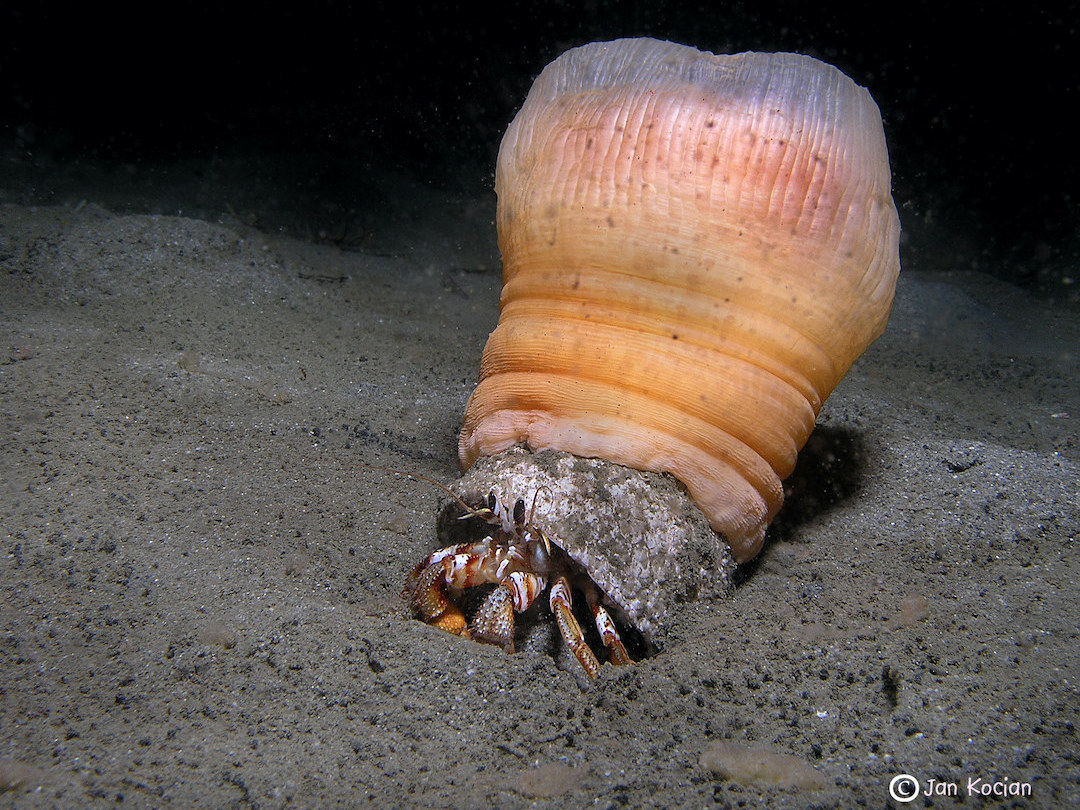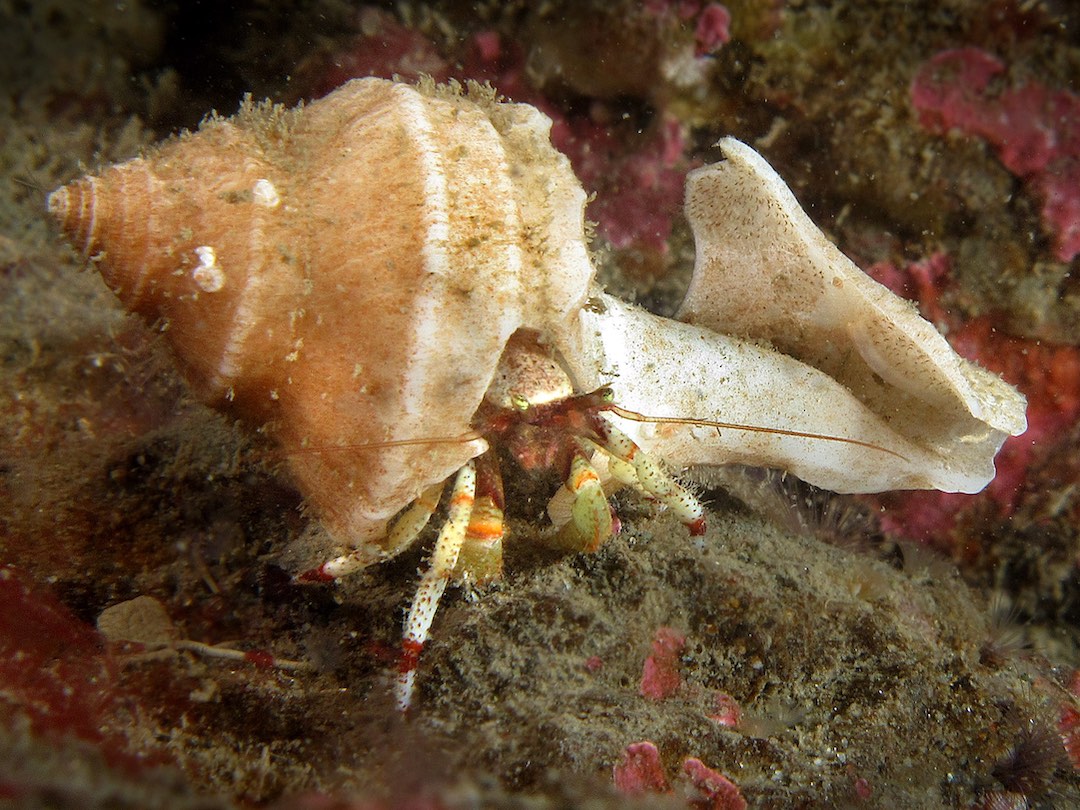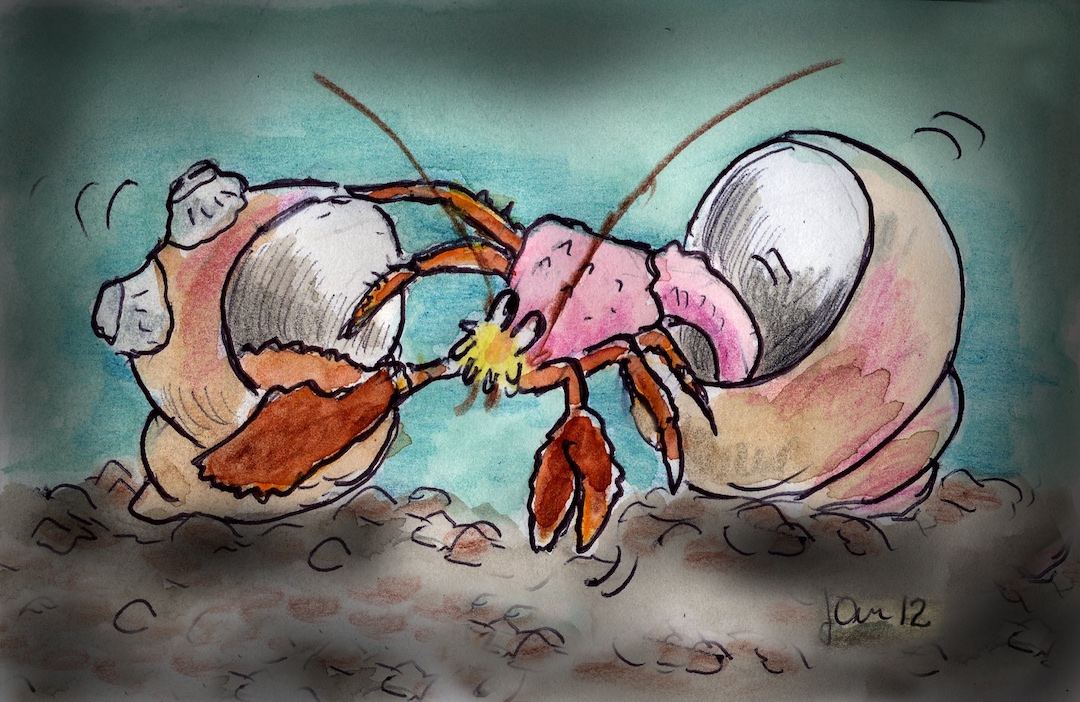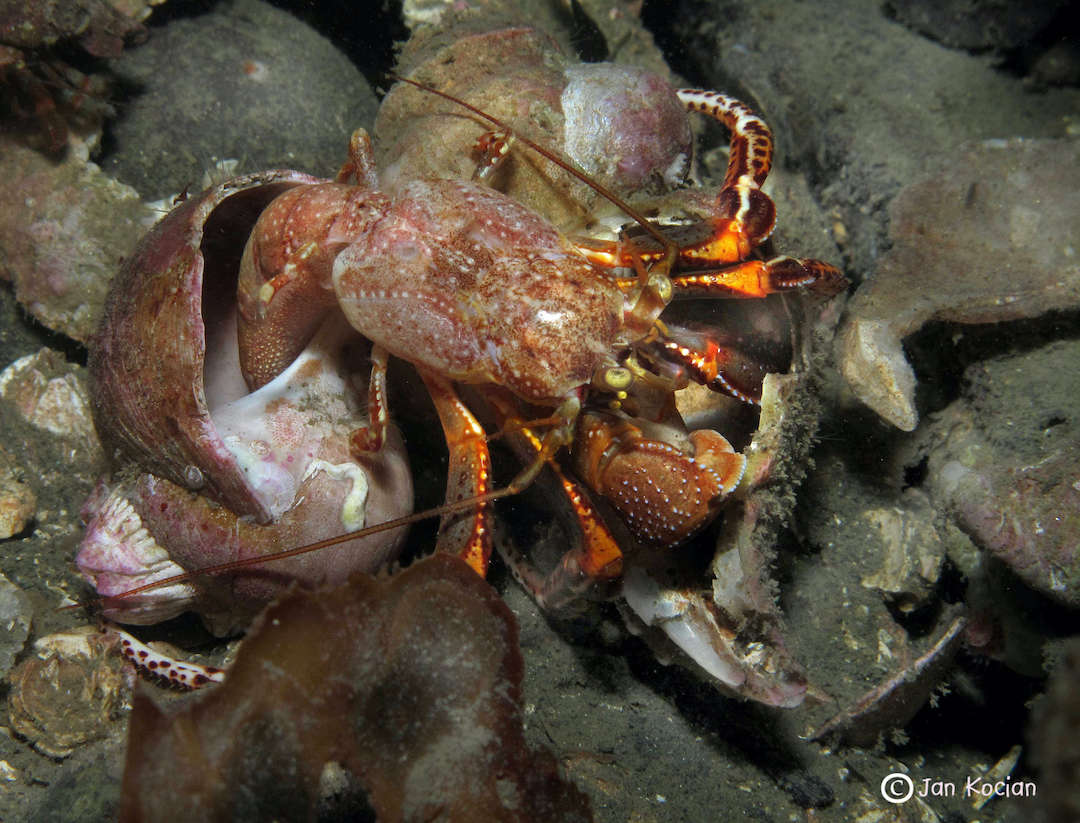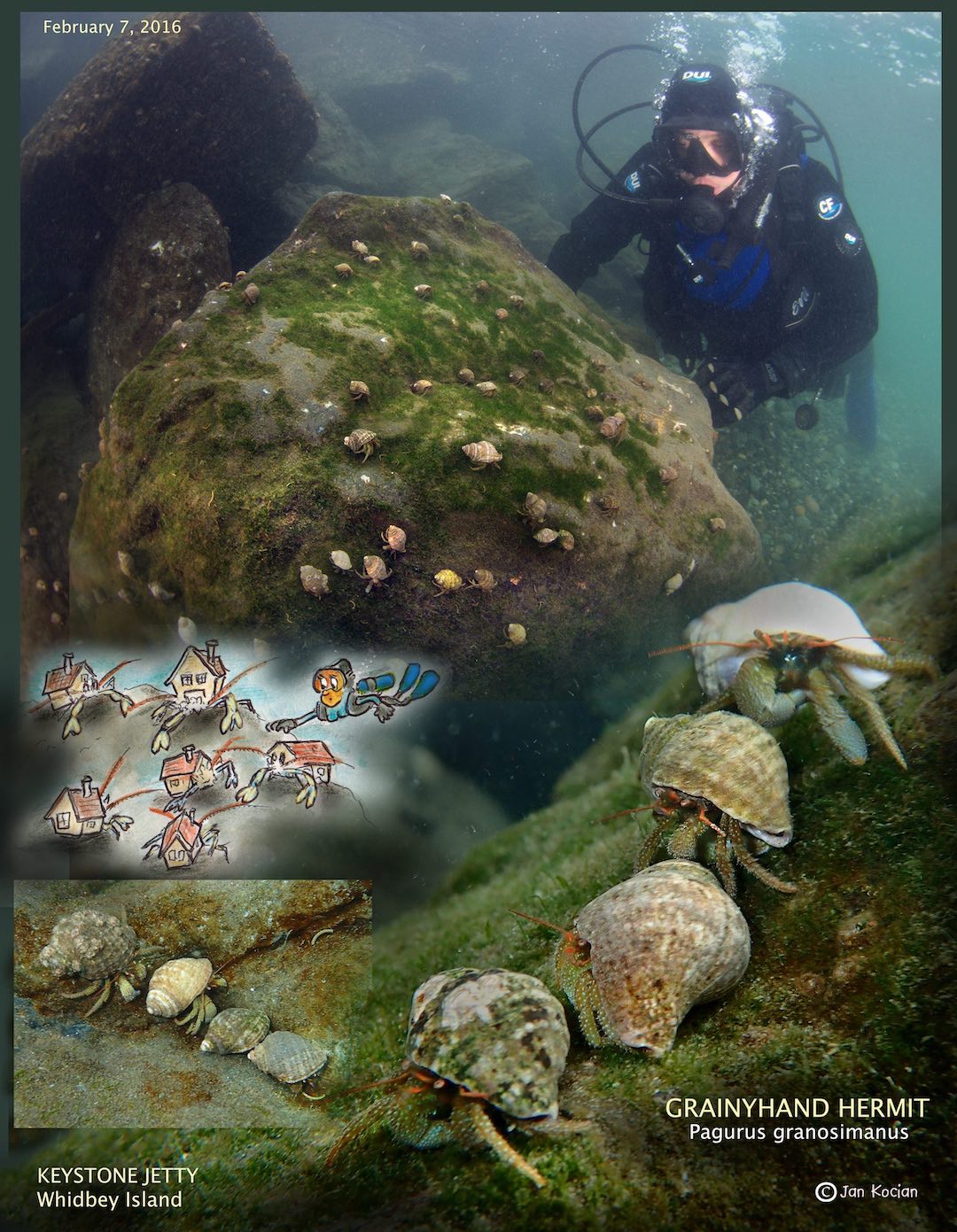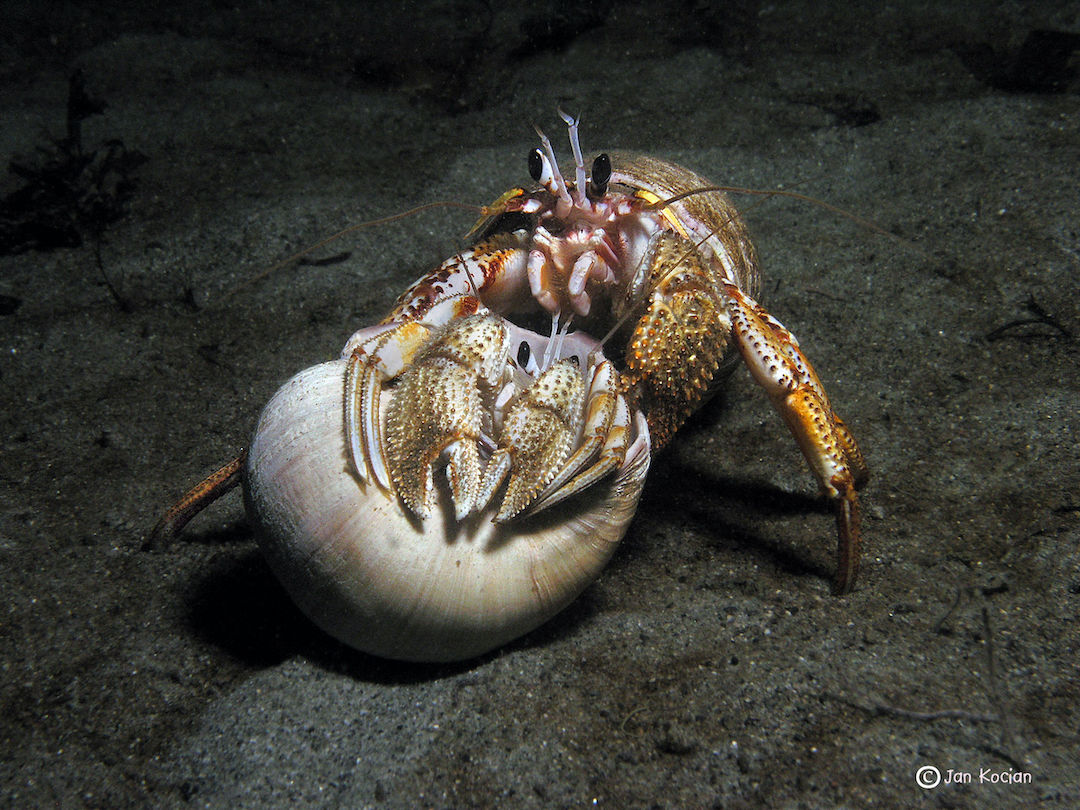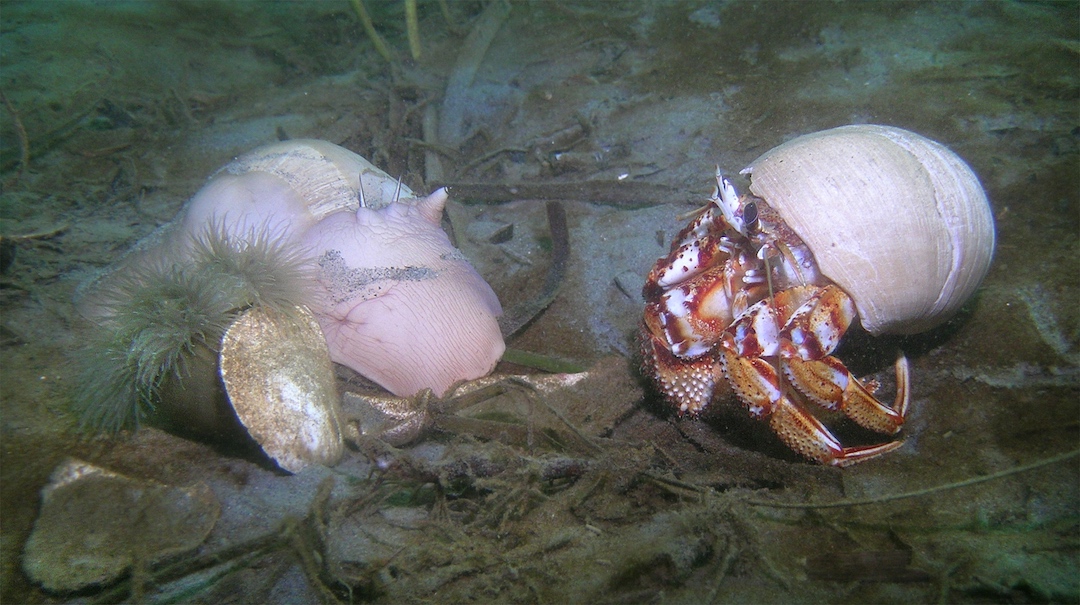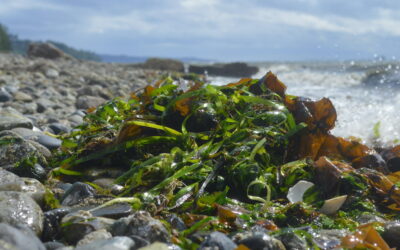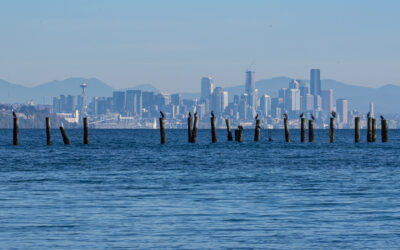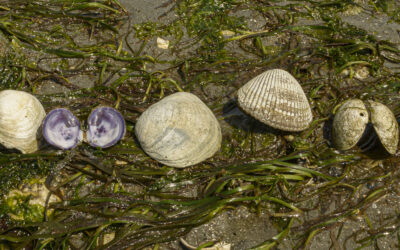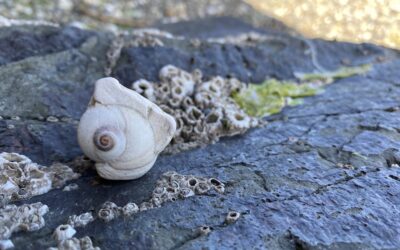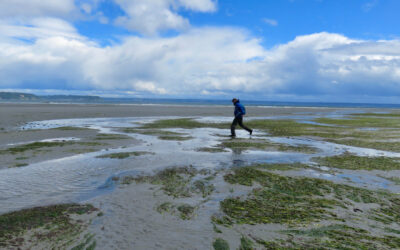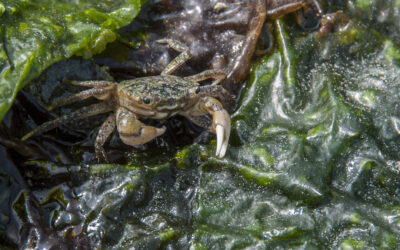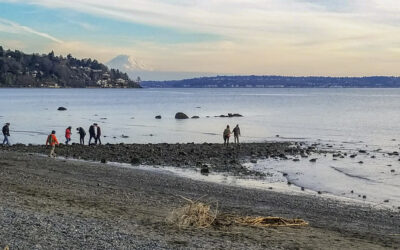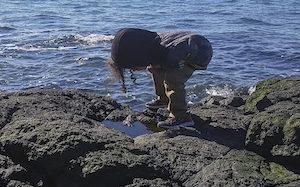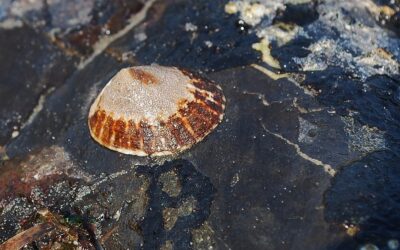HERMIT CRABS
by Sadie Bailey, Summer 2021
photos and drawings by Jan Kocian
fact checked by Greg Jensen
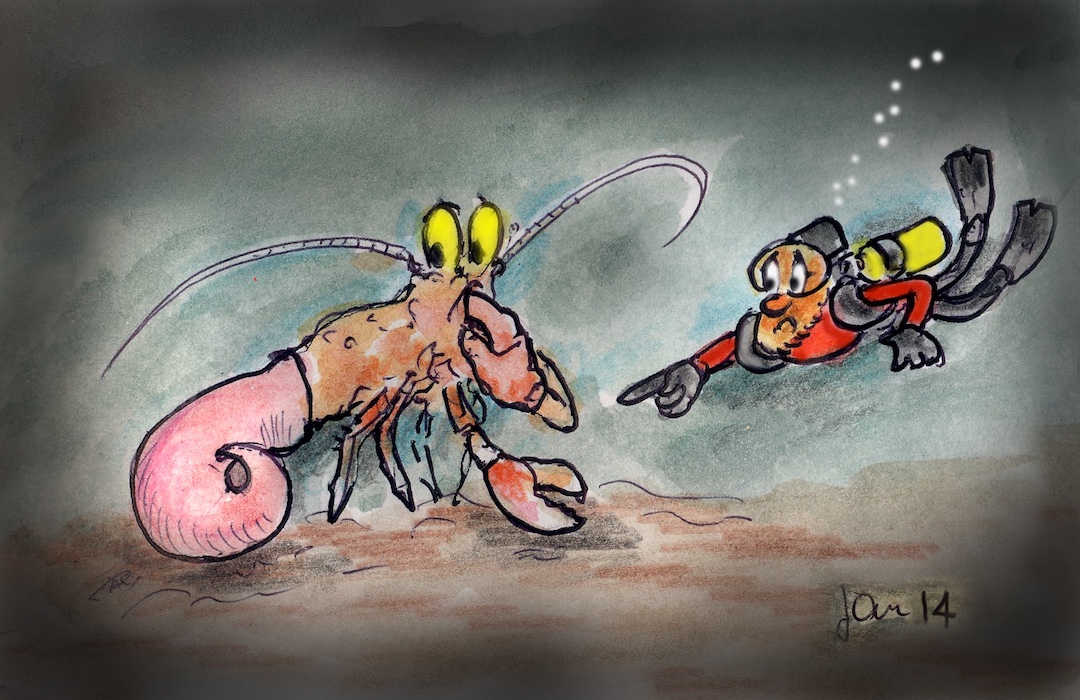
HERMIT CRABS
by Sadie Bailey, Summer 2021
photos and drawings by Jan Kocian
fact checked by Greg Jensen
The waves fly onto the beach as if they were racing each other. Which one can reach the end of the beach the fastest? You walk across the beach while the cold water tries to pull you in with the rope of the tide. Near your foot, there is a small shell that is entangled in the sand. What could it be? A hermit crab!
Hermit crabs can be found near aquatic areas, as they need fresh or salt water to dampen their gills — without a water source the hermit crab would not survive. Their reliance on the aquatic scene is very different from what I used to picture when I thought of hermit crabs. Have you ever seen the bright-colored shells in small, enclosed cages? The hermit crabs that you might walk past in the mall and beg your mom to let you take one home? That’s how I remember hermit crabs!
Thinking about it now though, I was very close-minded about these crabs and all species in the world. Even a creature as small as the hermit crab has hundreds of species.
Beyond the hermit crabs I saw at the mall, one of the more common species of hermit crab is the grainyhand hermit crab. This particular hermit crab is distinguishable by the blue dots on its chelipeds (the limbs that have claws), plus orange- or red-colored antennae. You can find the grainyhand hermit crab at most rocky or algae-filled beaches ranging from Alaska to northern Mexico.
Between the colorful dots and the red-themed antennae, this hermit is one to keep an eye out for! Though there are a lot of physical differences between this hermit and others, there is a very obvious similarity — their diet!
A hermit crab’s diet includes worms, plankton, and any other small organic life or detritus that may be near them. While hermit crabs go after smaller targets, they themselves are targeted for being so small by different predators. Sea stars, gulls, crows, and larger crabs will prey on them.
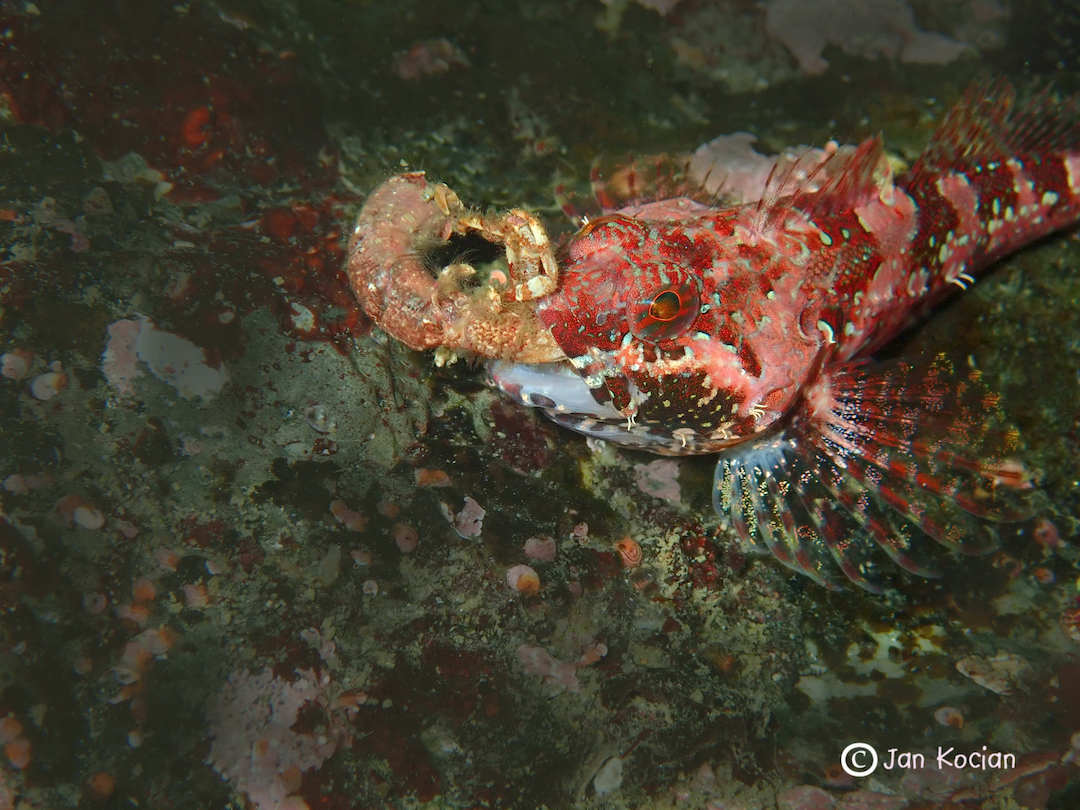
Scalyhead sculpin eating hermit crab
Hermit crabs live in borrowed shells because their abdomen has no shell and is soft and vulnerable. These crabs are actually born in the sea and just drift until they are big enough to find their first mobile home.
Contrary to popular belief, these crabs do not kill for their homes; they are able to find dead or dying snails in order to get their shells. Hermit crabs can actually smell these snails. Though they don’t kill the occupants for their shells, there is still the pressure of finding a good shell. They spend a lot of time searching, and it is a highly competitive environment when they do find a suitable shell.
It’s not a shopping trip to a fully stocked store. It’s a hunt. And each crab must put forth their strongest claw in order to find the shell for them. They have to. Their shells are not just a cute tee, it is their protection and survival. But everything grows, and the shopping trips continue. They’re like us. We both grow and change, and our bodies get bigger. When hermit crabs eventually need a new sized shell, they shed their outer covering and start the competitive process of finding another shell all over again. Another trip to the store.
If you find yourself walking across the beach in the Pacific Northwest during a very low tide, be sure to spend a little time looking for the little hermit crabs.
video by Tom Noland
Now when the ocean breeze skims across the wild waters, and the waves crash at the finish line of the beach, consider this little crab! More than a colorful, caged display, they are scrappy little creatures simply trying to survive and find their latest home, I suppose a goal we all share to some degree.
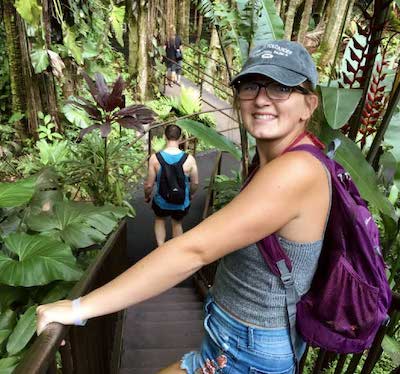
Sadie Bailey is a volunteer writer for Salish Magazine. Exploring and writing have always been hobbies that are important in her life. Though enrolled in Olympic College, Sadie plans to transfer to a university, expanding her associate degree. Even with busy days of a full school schedule, writing, exploring, and volunteering are major priorities in her life.
FIND OUT MORE
Table of Contents, Issue #12, Summer 2021
Beach Wrack
by Nick Baca, Summer 2021 photos by Nick Baca except as notedby Nick Baca, Summer 2021 photos by Nick Baca except as notedOn a warm sunny day, the shores of Puget Sound are filled with the smell of rotting seaweed. Flies are heard before they are seen, swarming above...
Piling Up
by Jeff Adams, Summer 2021 photos by Jeff Adams except as noted fact checked by Andy Lambphoto by John F. Williamsphoto by John F. Williamsby Jeff Adams, Summer 2021 photos by Jeff Adams except as noted fact checked by Andy LambAs a marine ecologist and nature...
RVs of the Beach
by Tom Noland, Summer 2021 photos by Tom Noland except as noted fact-checked by Greg Jensenby Tom Noland, Summer 2021 photos by Tom Noland except as noted fact-checked by Greg JensenWalking the shore of Cama Beach State Park on one of the lowest tides in recent...
Shell Shapes
by Chris Rurik, Summer 2021photo by Sarah Cavanaughphoto by Sarah Cavanaughby Chris Rurik, Summer 2021 Photos by Sarah CavanaughI have a collection of broken shells. They litter my desk and drawers, wave-smoothed fragments of curves and spirals, half-bleached, like...
Moon Snails at Low Tide
by Marilyn DeRoy, Summer 2021 Photos & video by Marilyn DeRoyBy Marilyn DeRoy, Summer 2021 Photos & video by Marilyn DeRoyAt the end of May, we had two days of minus 3.8’ (minus 1.15 m) tides at the northern end of the Kitsap Peninsula; wonderful for...
A Rainbow of Crabs
by Laura Marx, Summer 2021 fact-checked by Greg Jensen photo by John F. Williamsphoto by John F. Williamsby Laura Marx, Summer 2021 fact-checked by Greg Jensen On a Saturday in early March, in an attempt to shake off the last of the winter lockdown slump, my partner...
Poetry-12
Summer 2021Photo by Jessica C. LevinePhoto by Jessica C. LevineSummer 2021To begin this section of poetry, here are three haikus which speak to our excessive heat this summer.by Drea Dangerton Cold water absentDrive belt for water massesFrayed, hardly churning...
Hello Under There
Proper Etiquette for Exploring the Beach by Sarah Lorse, Summer 2021 photo by Kaylani Siplinphoto by Kaylani SiplinProper Etiquette for Exploring the Beach by Sarah Lorse, Summer 2021 At first glance, the beaches along the Salish Sea may seem desolate, except for the...
Home Sweet Home
by Barbara Erickson, Summer 2021 Photos by Barbara Erickson except as noted by Barbara Erickson, Summer 2021 Photos by Barbara Erickson except as notedWHOOPEE! With the approach of summer and loosening of COVID restrictions, it’s time to head out exploring! For me,...
PLEASE HELP SUPPORT
SALISH MAGAZINE
DONATE
Salish Magazine contains no advertising and is free. Your donation is one big way you can help us inspire people with stories about things that they can see outdoors in our Salish Sea region.
We also don't advertise Salish Magazine, so please spread the word of this online resource to your friends and colleagues.
Thanks so much for your interest and your support.
We also don't advertise Salish Magazine, so please spread the word of this online resource to your friends and colleagues.
Thanks so much for your interest and your support.

